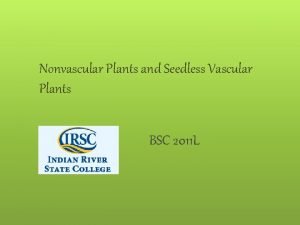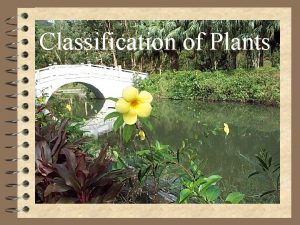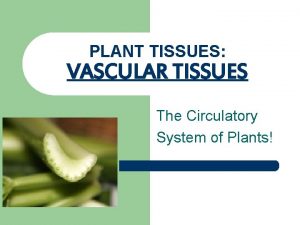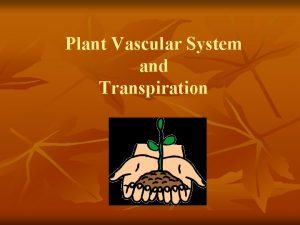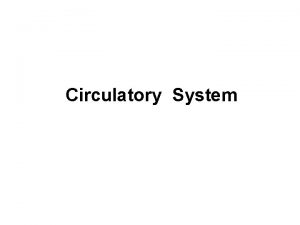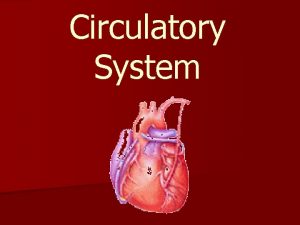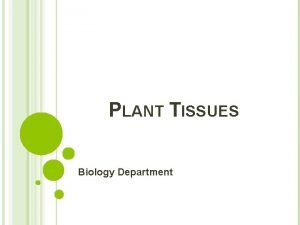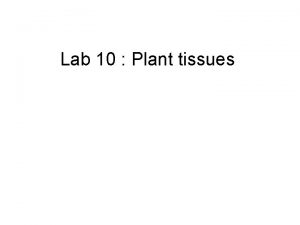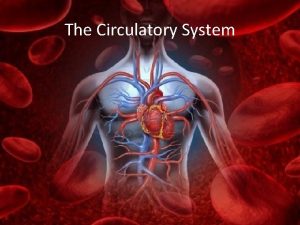PLANT TISSUES VASCULAR TISSUES The Circulatory System of










- Slides: 10

PLANT TISSUES: VASCULAR TISSUES The Circulatory System of Plants!

The Vascular System: For plants to survive, they must… l take in nutrients & water from environment l transport water up to the leaves, and glucose back down for storage The plant’s vascular system is their “circulatory system” designed to transport materials with the plant!

Plant Tissues: l Cells specialize to take on certain roles within the plant. Structures are formed from specialized tissues. (See Figure 1, pg. 286) l Differentiation: – A change in the form of cells to allow them to carry out a particular function.

Plant Tissues (Con’t): Meristematic Tissue: l l Cells that can rapidly divide produce all growth in plants Unspecialized cells found at the tips of stems, roots, in rings around the stems of larger plants, etc.

Plant Tissues (Con’t): Dermal Tissue: l l Cells that protect the outer layers of a plant – epidermis is the outermost layer. These cells protect plants from disease & predators, and prevent water loss. On stems and leaves, these cells often produce a waxy cuticle. On roots, these cells have fine root hairs to aid in absorption of water.

Plant Tissues (Con’t): Ground Tissue: l l The internal non-vascular tissues Could be specialized for storage, support, photosynthesis, etc.

Plant Tissues (Con’t): Vascular Tissue: l l Cells that specialize in transport of water & other substances among cells Two types of tissues: – Xylem – Phloem

Vascular Tissues (Con’t): Xylem: l l water-conducting cells - from roots up to rest of the plant after maturation, these cells die; leaving thick -walled, hollow cells that are pitted or open at the ends ideal for water transfer

Vascular Tissues (Con’t): Phloem: l l food-conducting cells - from one part of plant to another (mostly down towards roots) these living cells have large pores at their ends and share cytoplasm ideal for food transfer

Types of Plants: l MONOCOTS – l Many vascular bundles throughout the stem DICOTS – Vascular bundles arranged in a ring … some form well-developed ring with bark, etc. – THE END!!!
 Tissue in cardiovascular system
Tissue in cardiovascular system Vascular plants vs nonvascular plants
Vascular plants vs nonvascular plants Life cycle of seedless plants
Life cycle of seedless plants Vascular and non vascular difference
Vascular and non vascular difference Body tissues chapter 3 cells and tissues
Body tissues chapter 3 cells and tissues Chapter 3 cells and tissues answer key
Chapter 3 cells and tissues answer key Body tissues chapter 3 cells and tissues
Body tissues chapter 3 cells and tissues Cells form tissues. tissues form __________.
Cells form tissues. tissues form __________. Chapter 3 cells and tissues
Chapter 3 cells and tissues Respiratory digestive and circulatory system
Respiratory digestive and circulatory system How respiratory system work with circulatory system
How respiratory system work with circulatory system


